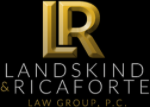When you set up a living trust, you are creating a separate legal entity that has its own assets. Since these assets are separate from your personal assets, anything owned by the trust will avoid probate and be passed directly to your heirs. However, all assets used to fund the trust need to be properly transferred in order to become trust assets.
A pour-over will is an invaluable document for anyone who has created a living trust as part of their estate plan. It’s a specialized last will and testament, designed to catch assets that have not been retitled or transferred into your living trust, “pouring” them into the trust upon your death.
The Purpose of a Pour-Over Will in New York
There are complexities involved in funding a living trust, and sometimes assets don’t always make it into the trust before the testator passes away. Unfortunately, any assets  that do not get transferred into your trust will be treated as your own personal property. In other words, they will have to go through the probate process and will be subject to estate tax.
that do not get transferred into your trust will be treated as your own personal property. In other words, they will have to go through the probate process and will be subject to estate tax.
Assets may not be transferred into your trust before your passing for a variety of reasons, including:
- You acquired property in your name (such as a house or a large inheritance) after the trust was executed
- You forgot or were unaware of assets titled in your name only
- You accidentally left some assets outside the trust
- One or more transfers failed because the asset was not retitled in the trust’s name
- You sold trust property but passed away before the proceeds of the sale were sent to your account
Who Needs a Pour-Over Will?
No matter how closely you monitor your estate and finances, there’s always the risk that some assets won’t make it into your trust. In essence, a pour-over will is a necessary safety device to ensure your property is distributed in exactly the way you want it to be.
You may need a pour-over will if:
- You have a living trust and a will. Your last will and testament may help to clarify which of your heirs will receive certain assets. However, if the will doesn’t redirect assets to your trust, your heirs will have to wait out the probate process, pay the necessary probate fees, and pay estate taxes before receiving your personal property.
- Your estate plan includes the trust only. There are some good reasons to include both a will and a trust in your estate plan. Your will has the power to appoint an executor to your estate, giving you control over who oversees the distribution of your property. It also offers the only opportunity you will have to nominate a guardian for your minor children. Finally, any assets outside the trust upon your passing will be treated as if you had died “intestate,” leaving those assets to be distributed to certain heirs according to state law. Your legal next-of-kin may differ from your trust beneficiaries, meaning that your personal property could go to someone you never intended to receive it.
- Your will was created before your trust. Many people begin making their estate plans by creating a last will and testament. As their fortunes grow, they may later decide that a living trust is a better way to achieve their goals. In order for the two documents to work together as effectively as possible, they must each have a separate listing of assets. An out-of-date will may contain directions for something that has since become trust property, causing confusion over what is a personal asset and what is a trust asset. In addition, your will offers only limited options for leaving your estate to minor children. Minors cannot inherit directly from your estate, so placing your personal assets into your trust with a pour-over will can protect their inheritances until your children come of age.
The estate planning attorneys at Landskind & Ricaforte Law Group, P.C. can help you make sure that your estate plan is up to date and takes the best advantage of New York laws. Contact us today through our online form to get answers to your questions.
|
Related Links: |
